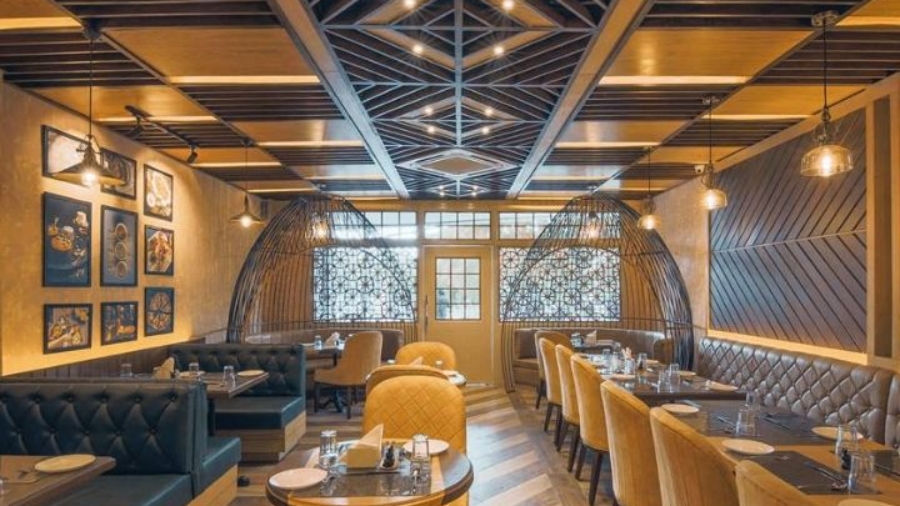Restaurant Interior Design
Introduction:
The success of a restaurant goes beyond just the quality of its food; the ambiance and interior design play a crucial role in creating a memorable dining experience. A well-designed restaurant interior not only attracts customers but also enhances their overall enjoyment. In this blog, we’ll explore some essential restaurant interior design tips to help you create a space that leaves a lasting impression on your patrons.
Understand Your Brand Identity:
Before diving into the design process, it’s essential to understand and define your restaurant’s brand identity. Consider the cuisine, target audience, and overall theme. Whether it’s a casual diner or an upscale fine dining establishment, the interior should reflect and complement the brand image.

Plan a Functional Layout:
Efficient space utilization is key to a successful restaurant. Plan a functional layout that maximizes seating capacity without sacrificing comfort. Consider the flow of traffic, the placement of tables, and the accessibility of service areas. A well-thought-out layout contributes to a seamless dining experience for both customers and staff.
Lighting Matters:
Lighting can dramatically influence the mood of a restaurant. Choose a combination of ambient, task, and accent lighting to create a balanced and inviting atmosphere. Warm, soft lighting is often preferred for a cozy and intimate setting, while brighter lighting may be suitable for casual and lively establishments.
Choose Appropriate Colors:
The color palette of your restaurant sets the tone for the dining experience. Consider the psychology of colors; warm tones like red and orange can create a vibrant and energetic atmosphere, while cool tones like blue and green can evoke a sense of calm. Ensure that the chosen colors align with your brand and the emotions you want to evoke in your customers.
Invest in Comfortable Furniture:
Comfortable seating is a fundamental aspect of restaurant interior design. Invest in high-quality, durable furniture that complements the overall aesthetic. The type of seating should also match the dining concept – casual dining may incorporate cozy booths, while fine dining establishments may opt for elegant, upholstered chairs.
Incorporate Unique Design Elements:
Differentiate your restaurant by incorporating unique design elements that capture the attention of your customers. This could include custom artwork, distinctive wall textures, or eye-catching focal points. These elements not only make your restaurant visually appealing but also contribute to a memorable dining experience.
Pay Attention to Acoustics:
Noise levels can significantly impact the comfort of your guests. Consider acoustical elements such as ceiling panels, wall coverings, and flooring materials to absorb sound and reduce echoes. Striking the right balance between a lively atmosphere and a comfortable noise level is crucial for creating an enjoyable dining experience.
Sustainability and Eco-Friendly Design:
Incorporate sustainable and eco-friendly design elements to appeal to environmentally conscious customers. Use recycled materials, energy-efficient lighting, and water-saving fixtures to minimize your restaurant’s environmental footprint. This not only aligns with current trends but also showcases a commitment to responsible business practices.
Conclusion:
In the competitive world of dining establishments, restaurant interior design is a powerful tool to stand out and create a unique identity. By carefully considering brand identity, functionality, lighting, colors, furniture, unique design elements, acoustics, and sustainability, you can craft an inviting and memorable space that enhances the overall dining experience for your customers. Elevate your restaurant’s ambiance, and watch as satisfied patrons return not just for the food, but for the immersive and delightful atmosphere you’ve created.

